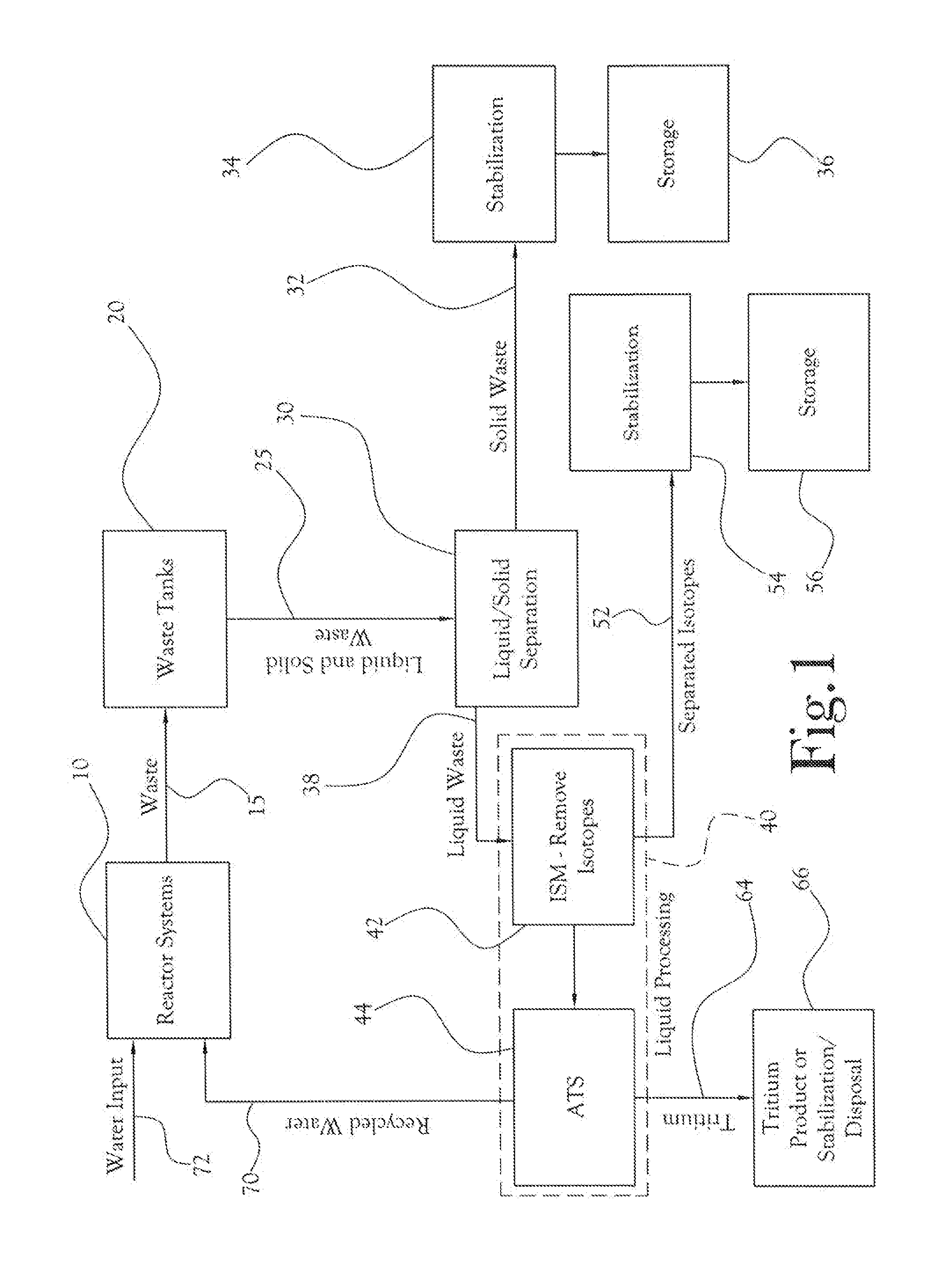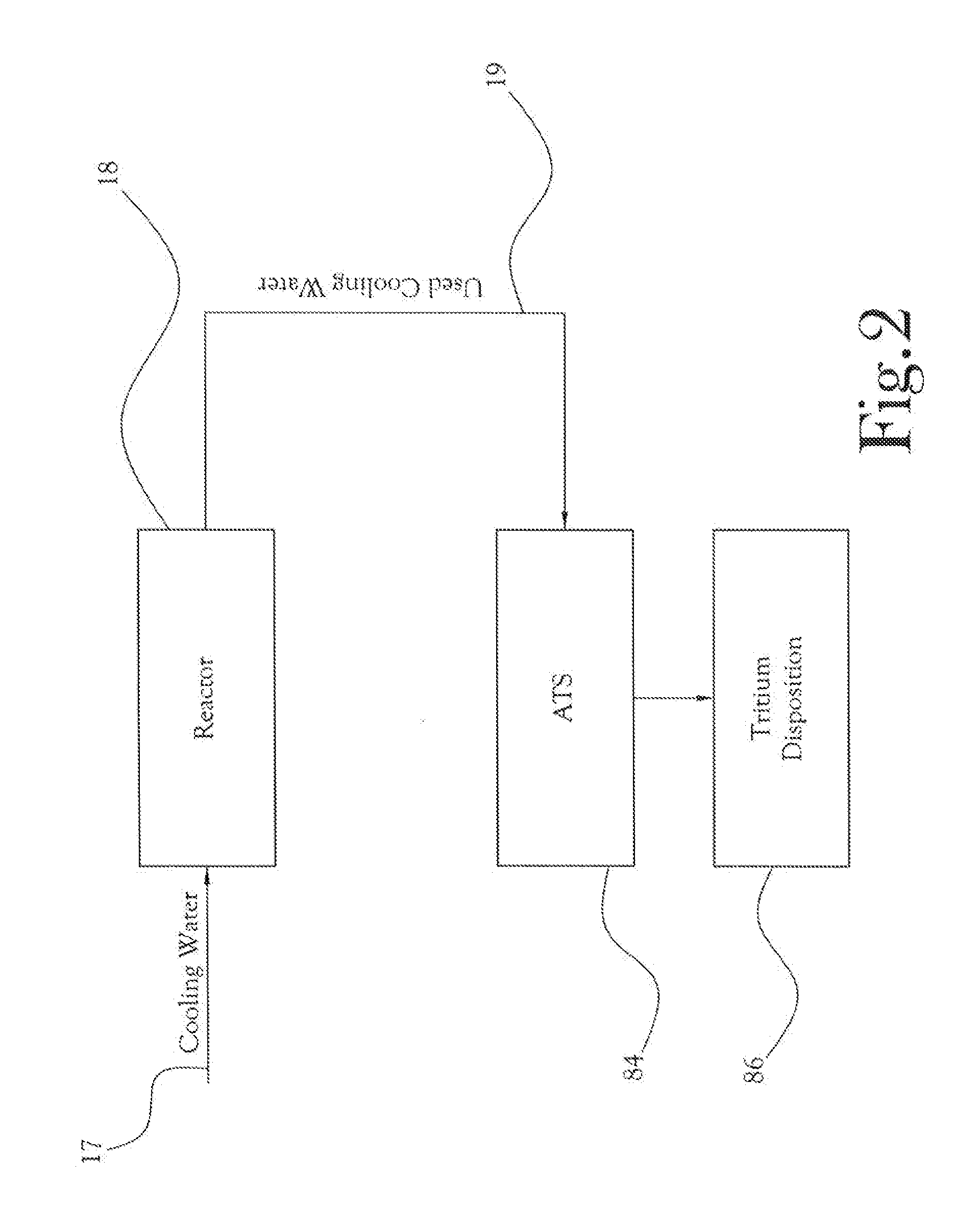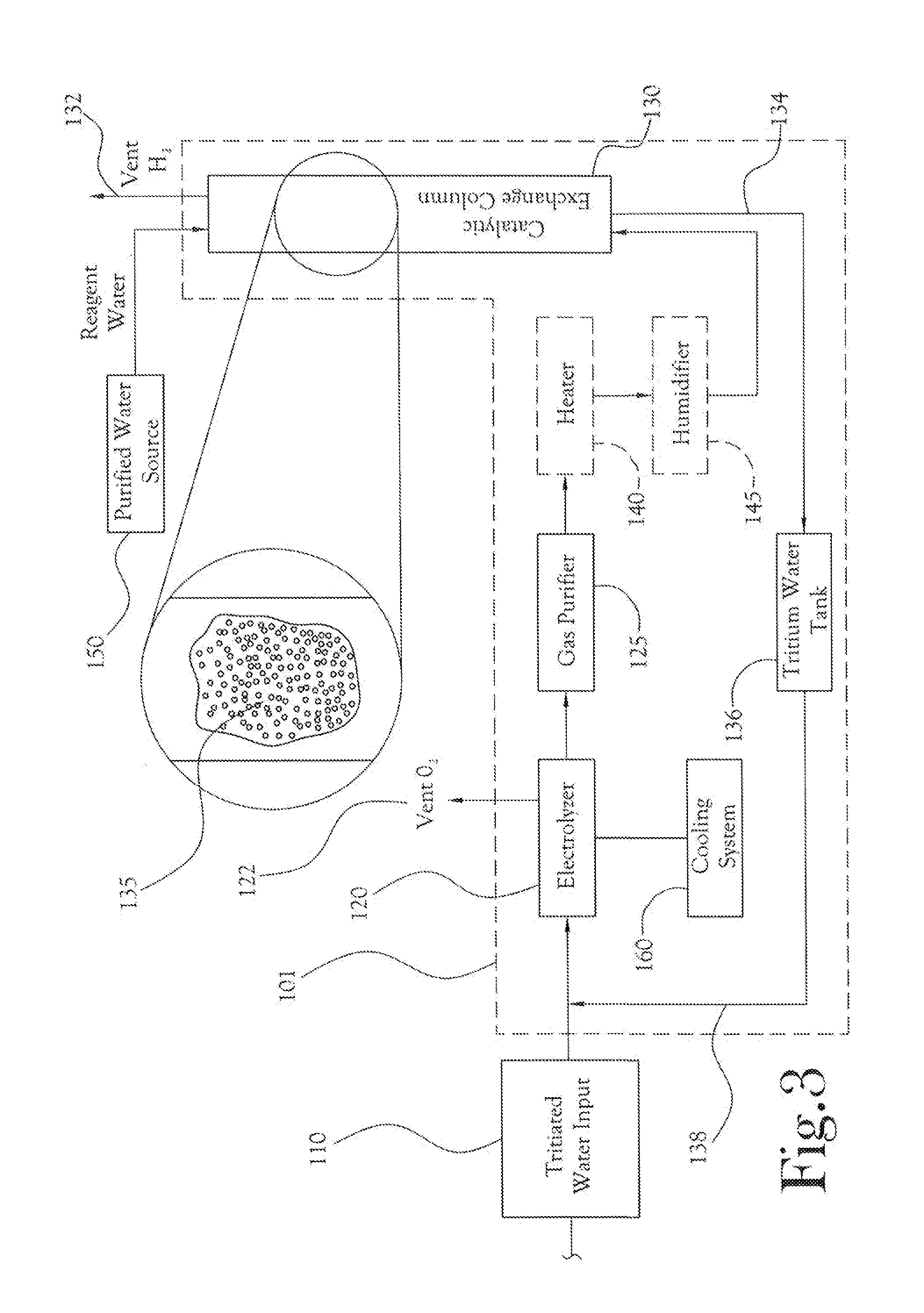Advanced Tritium System for Separation of Tritium from Radioactive Wastes and Reactor Water in Light Water Systems
a tritium system and radioactive waste technology, applied in the separation process, uranium compounds, radioactive contaminants, etc., can solve the problems of adverse environmental and public health effects, public outcry, and ineffective tritium removal by public water treatment processes, and achieve the effect of stabilizing the high activity tritium waste produ
- Summary
- Abstract
- Description
- Claims
- Application Information
AI Technical Summary
Benefits of technology
Problems solved by technology
Method used
Image
Examples
Embodiment Construction
[0034]The present general inventive concept, in some of its embodiments, includes processes and methods for the separation, isolation, or removal (collectively “separation”) of tritium from radioactive waste. In particular, the present general inventive concept, in some of its several embodiments, includes systems and processes for high throughput treatment of water from reactor systems to concentrate and separate tritium from the reactor water.
[0035]Turning to the figures, FIG. 1 illustrates an example embodiment of a larger system within which an advanced tritium system (ATS) for tritium separation is a component. As shown in the illustration, radioactive waste material from a nuclear reactor 16 is conveyed 15 first to waste tanks 20, where the waste material is kept submerged in water; as a result of storing radioactive waste, the water itself comes to contain a concentration of radioactive isotopes. The waste material, which at this stage includes both liquid and solid wastes, i...
PUM
 Login to View More
Login to View More Abstract
Description
Claims
Application Information
 Login to View More
Login to View More - R&D
- Intellectual Property
- Life Sciences
- Materials
- Tech Scout
- Unparalleled Data Quality
- Higher Quality Content
- 60% Fewer Hallucinations
Browse by: Latest US Patents, China's latest patents, Technical Efficacy Thesaurus, Application Domain, Technology Topic, Popular Technical Reports.
© 2025 PatSnap. All rights reserved.Legal|Privacy policy|Modern Slavery Act Transparency Statement|Sitemap|About US| Contact US: help@patsnap.com



